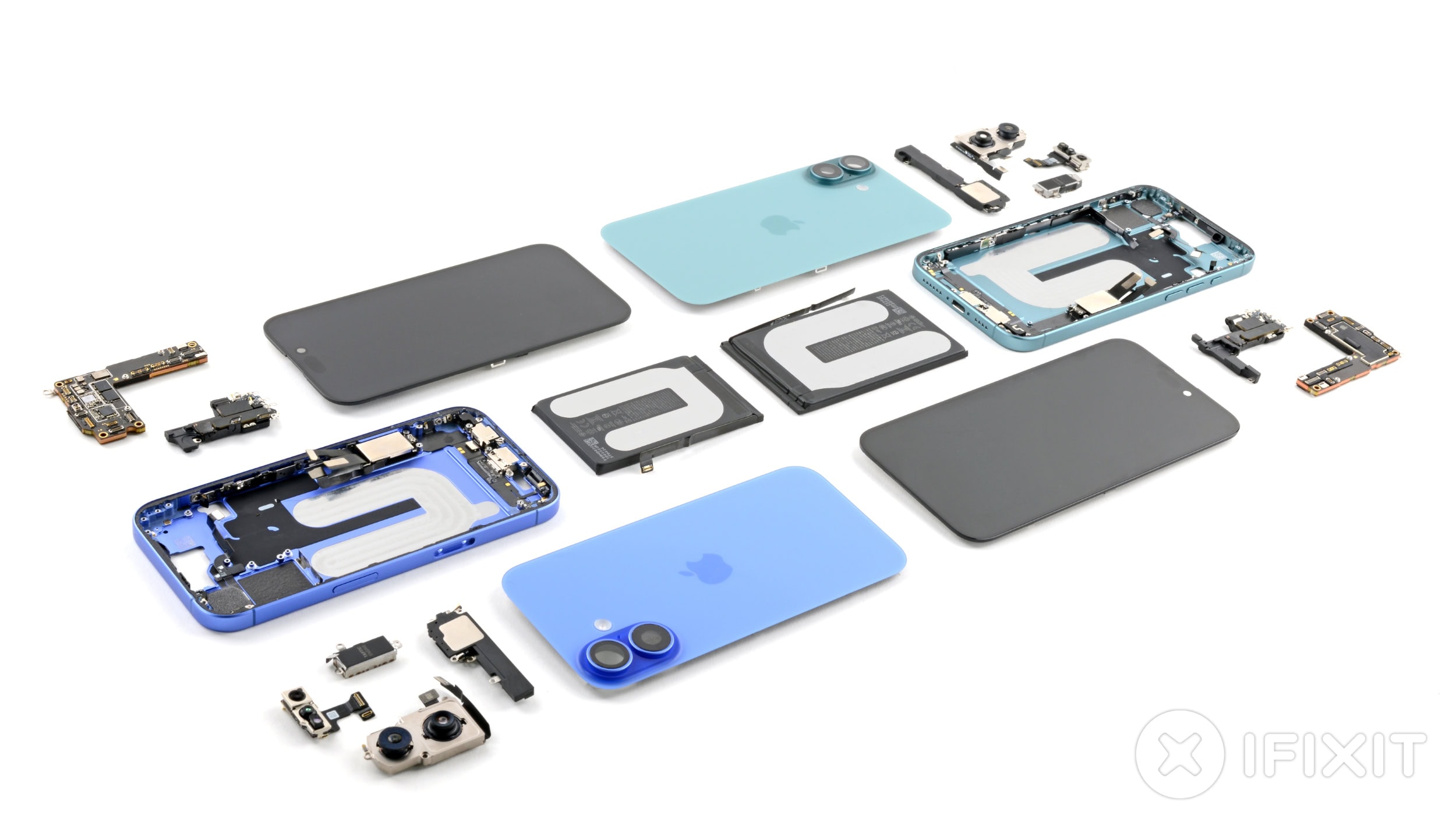

iFixit says the iPhone 16 is “Apple’s most-repairable iPhone yet. ” This is thanks to Apple making several internal changes, including using a new glue to hold the battery in place.
On the flip side, you’ll need a new tool to debond the glue from the battery and chassis.
iPhone 16 provides independent access to the battery
Over the years, iFixit repeatedly called out Apple for making its devices challenging to repair. Even if you could access and replace the internals, parts pairing meant they would not work.
With the iPhone 16‘s release, though, Apple appears to be making a conscious effort to make its devices more repair-friendly.
As previously detailed by Apple, the iFixit team found a new “sticky glue” holding the iPhone 16’s battery in place. The special glue can debond when a small amount of electrical power passes through it, allowing the iFixit folks to lift the battery with no force. This approach is far better than the pull tab adhesives Apple used on its previous iPhones, making battery replacement faster and easier.
iFixit’s iPhone 16 teardown reveals Apple uses a ferrous heat sink for the A18 chip for better heat dissipation. Interestingly, it only covers half the SoC, supposedly the area over the Neural Engine.
As for the new Camera Control button, the iFixit team found it is laser-welded to the frame. So, if the button stops working, you will have to replace the phone’s frame. More importantly, Apple is tracking the IC attached to the button. Thankfully, with Apple’s new Repair Assistant, parts pairing is no longer a major concern.
Apple takes a step in the right direction with iPhone 16
iFixit also praised Apple for its well-written repair manuals. Thanks to all those changes, the iPhone 16 earned a repairability score of 7 out of 10, a massive jump from the iPhone 15’s score of 4. The team highlighted the phone’s dual-entry design, easy access to several components, and independent access to the battery for quick and easy repairs.
Apple seems to be focusing on making its devices more repairable than before. This might be due to the regulatory pressure, but ultimately, it is a major win for consumers.